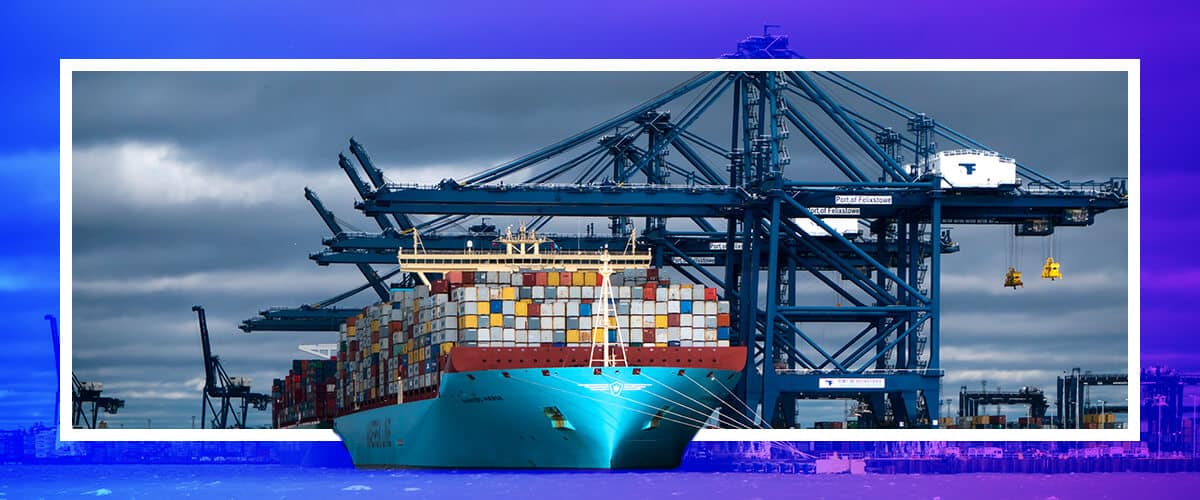For 3PL providers to achieve successful global expansion, the adoption of a cloud WMS for 3PL is a necessity. It provides the real-time data visibility and multi-location management capabilities that are essential for scaling operations, enhancing client services, and maintaining a competitive edge in the international marketplace.
Key takeaways
For those short on time, here’s what you need to know about using a cloud WMS to power your 3PL’s global growth:
- Legacy Systems Are a Bottleneck: Traditional, on-premise WMS platforms create data silos and lack the flexibility required for modern multi-location logistics, actively hindering international expansion.
- Cloud WMS Provides a Single Source of Truth: The primary advantage is creating a centralized command center with real-time visibility into inventory, orders, and operations across every warehouse in your global network.
- Agility is Your Competitive Edge: A cloud-based system allows you to scale resources up or down on demand, empowering you to onboard new international clients and handle market volatility with unmatched speed.
- The Right Features Drive Growth: Must-have capabilities like seamless integrations with e-commerce and carrier systems, advanced analytics, and client-facing portals are critical for delivering superior service on a global scale.
For a deeper dive into how these capabilities translate into a strategic advantage for your 3PL, read on.
Why the old way of traditional WMS fails at 3PL global scalability
Not long ago, a Warehouse Management System (WMS) was a fixture of the warehouse itself. It lived on a server in a back office, tethered to the physical location. This on-premise model, while functional for a single, self-contained operation, becomes an anchor when a 3PL sets its sights on global expansion.
These legacy systems are defined by their limitations:
- High Upfront Costs: On-premise solutions require massive capital expenditures for hardware, server maintenance, and software licenses for each new location.
- Data Silos: Information is trapped within the four walls of each warehouse. Getting a single, accurate, real-time view of total global inventory is a nightmare of manual report-pulling and data consolidation.
- Inflexibility: Scaling up for a new client or a seasonal peak is a slow, expensive, and disruptive process. Legacy systems lacked the agility needed to scale across multiple sites or respond to market changes promptly. Any upgrade typically meant system downtime and internal disruption.
For a 3PL aiming to be agile and responsive on a global stage, this model is simply unsustainable. It creates bottlenecks, stifles growth, and makes it impossible to deliver the consistent, high-quality service that international clients demand.
Unlock a personalized tour of Logiwa IO
How modern cloud WMS for 3PLs power international expansion
A cloud-based WMS fundamentally changes the game by moving the system’s “brain” from a local server to the cloud. This single architectural shift dissolves the physical barriers that hold back growth, providing a centralized command center for a distributed network of warehouses.
Achieve total visibility with real-time inventory management for 3PLs
The most significant advantage of a cloud WMS is the creation of a single source of truth. When an item is received at a dock in Chicago, picked from a shelf in Melbourne, or packed for shipping in Felixstowe, the system updates for everyone, everywhere, instantly.
This isn’t just about knowing inventory counts. Modern cloud-based WMS for logistics provides a holistic view of the entire operation. Cloud-based WMS software facilitates real-time inventory management in 3PL operations, and also gives managers insight into dock activity, order status, workforce performance, and more. This comprehensive visibility allows your team to make smarter, proactive decisions, anticipate bottlenecks before they occur, and provide clients with the accurate, up-to-the-minute information they crave.
Seamlessly manage operations with a multi-location Warehouse Management System
Imagine onboarding a new client with fulfillment needs in three different countries. With a traditional system, this would involve weeks or months of IT setup at each location. With a multi-location warehouse management system built on the cloud, you can configure and launch new facilities and clients from a central dashboard.
This capability is the cornerstone of efficient scaling. Leading WMS providers design their systems specifically for this challenge. Logiwa IO is designed for both single- and multi-location warehouse management, all within the same software. This means your processes, rules, and reporting remain consistent across your entire network, simplifying management and ensuring uniform service quality, regardless of geography.
Scale on demand with unmatched flexibility
The global logistics landscape is volatile. Demand can spike overnight due to a client’s viral marketing campaign or a sudden market shift. A cloud WMS is inherently elastic. Need more processing power for Black Friday? The system scales automatically. Onboarding a major new client with thousands of SKUs? The platform can handle the new load without requiring you to install new hardware.
This agility is a key competitive differentiator. Cloud WMS for 3PLs makes it easy to scale operations without the typical constraints of on-premises systems. Warehouse managers can scale during periods of seasonal spikes or when onboarding new clients without too much hassle. This on-demand scalability means you can say “yes” to new opportunities with confidence.
What to look for in a WMS for international expansion
When evaluating a WMS for international expansion, it’s crucial to look beyond the basic features. A true growth platform will include tools specifically designed for the complexities of global commerce.
- Robust Integration Capabilities: A WMS cannot operate in a vacuum. It must serve as the hub of your tech stack. Look for platforms with seamless integrations to major e-commerce platforms (Shopify, BigCommerce, Magento), ERPs, and a wide network of international shipping carriers. This ensures that the WMS can be integrated with a wide range of ERP, transportation management, e-commerce, and warehouse automation systems.
- Advanced Analytics and Reporting: In a global operation, data is your most valuable asset. A powerful cloud WMS should offer more than just historical reports. It should provide the data for predictive analytics to help you optimize warehouse layouts, forecast labor needs by region, and identify efficiency trends across your network. Embedded analytics and big data tools help 3PLs to forecast demand accurately and proactively plan warehouse operations.
- Secure Client-Facing Portals: Transparency builds trust. The ability to offer your clients a secure, self-service portal where they can view their inventory levels, track order statuses, and run their own reports in real-time is a powerful value-add. It reduces the administrative burden on your team and gives your clients the autonomy and visibility they expect from a world-class logistics partner. This feature allows you to grant customers access to warehouse data, turning real-time fulfillment visibility into a competitive advantage.
Secure your future in the global marketplace
The path to becoming a truly global 3PL is paved with technology. While on-premise systems represent the roadblocks of the past—siloed, rigid, and expensive—a cloud-based WMS like Logiwa IO is the modern highway to international success. By providing a single source of truth, centralized control over a distributed network, and the agility to scale at a moment’s notice, it empowers you to seize the immense opportunity of global commerce.
Making the switch is a decision that positions your 3PL for a future of sustainable, profitable growth. It’s time to evaluate your current system not on what it does today, but on where it can take you tomorrow. Schedule your demo of Logiwa IO now.





